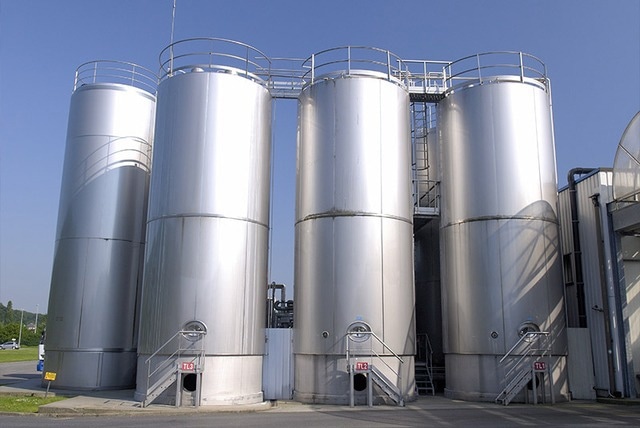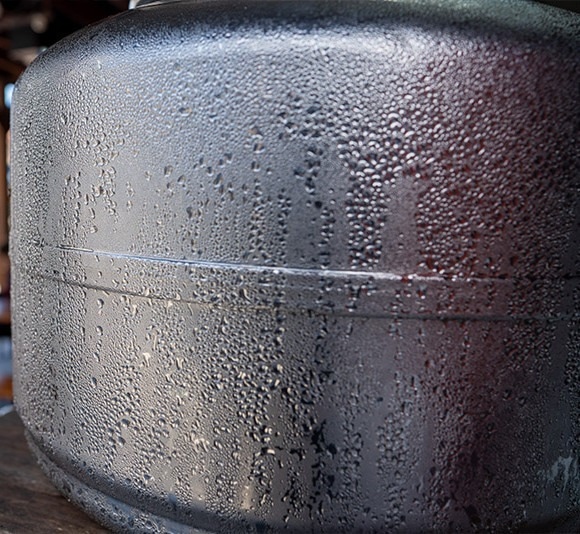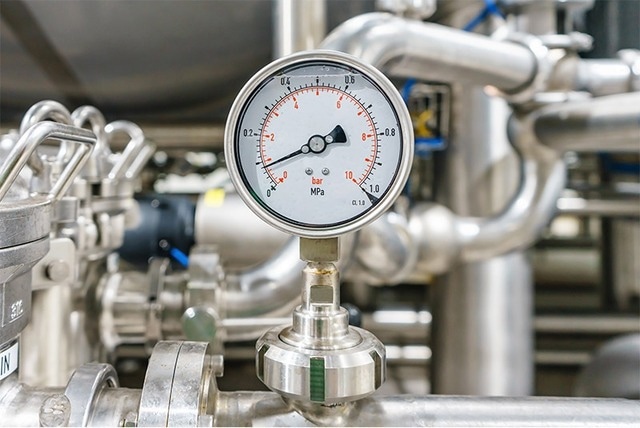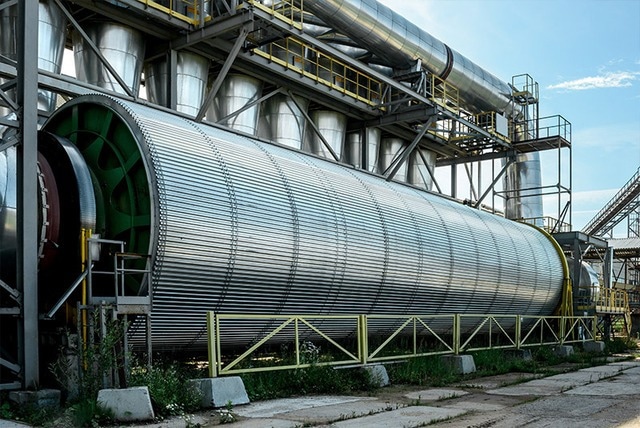Industrial food production heavily relies on process air to handle and process raw materials, intermediate products, and final products.
Compressed air is vital in various other process applications, such as loading and unloading transport equipment and storage facilities, loosening and sorting processes, and packaging.

Image Credit: Aerzener Maschinenfabrik GmbH
For users in food processing, several considerations emerge. In addition to meeting industry-wide requirements for generating process gases, like air purity, other factors require attention.
Adequate technical measures must be implemented to prevent unwanted interactions between the process air and the materials. For example, excluding contamination from auxiliary materials during process air generation is paramount.
Achieving oil-free operation, certified according to ISO 8573-1, Class 0, becomes a prerequisite for using blowers, compressors, and related equipment. Excessive heat generated by the process air can potentially damage transported goods.
The moisture content in the air used as a conveying medium also poses a problem with equally serious consequences. When water vapor in the air condenses, it can compromise product quality and the entire production process.
Plants with highly sensitive applications are characterized by generating process air using blowers and compressors, and the subsequent treatment using filtering, drying, and cooling form a coordinated circuit.
Process air drying, in particular, presents a technical challenge that AERZEN can effectively address.
The Challenge of Humidity in Process Air
In pneumatic handling processes, high humidity in the process air can cause various issues because the process air often directly contacts the product. This is especially problematic in food processing, where hygroscopic products like sugar, cocoa, starch, or spices are handled.
When these products absorb moisture, it can lead to the growth of bacteria, potentially resulting in the loss of raw materials depending on storage duration. The material can harden in the corners of silos, making handling even more challenging.
Humid bulk material has a lower flow rate, leading to potential blockages in delivery pipes. These blockages can result in production downtime or, at the very least, delays. The product accumulation on system components also hampers the processing, ultimately increasing production costs.

Image Credit: Aerzener Maschinenfabrik GmbH
To address materials that tend to stick together, mechanical devices like hammers or vibration plates can be used as a short-term solution. These devices help to loosen or dislodge bulk material, although their effects are often temporary.
The negative consequences of moisture absorption during storage, transportation, and processing persist in the end products. In the food industry, ventilated containers and drum dryers are employed to dry food products.
The basic idea involves passing drying air over the materials to remove moisture from the bulk material. Once the air cools down, condensate is generated and removed from the process in a controlled manner.
When this process occurs in a closed system, much of the heat generated during the compression of the process air can be reclaimed.
Devices for process air drying, whether upstream or downstream of the blower or compressor, serve as an effective solution to combat moisture intrusion during pneumatic conveying.
These devices can adjust humidity according to the user's process requirements or lower the dew point. Flexibility is crucial as the humidity of atmospheric air varies throughout the day and between seasons.
Process Air Drying in Detail
Process air dryers regulate the relative humidity and dew point of the compressed medium. To understand this better, it is important to note that the ability of the air to absorb a certain quantity of water vapor depends on the air temperature and air pressure.
The relative humidity indicates how saturated the air is with water vapor compared to its maximum capacity. When the air temperature decreases while the water content remains constant, the relative humidity increases.
Once the temperature reaches the dew point, the relative humidity reaches 100%, and any further cooling causes water vapor to condense. Low dew points and low relative humidity are the goals of process air drying.
Plants for Drying Process Air
When the relative humidity reaches 65%, there is a higher risk of mold forming in the bulk material due to the process air. To counter this, drying facilities become necessary, and it is preferable to initiate this during material acceptance.
Preprocessed air, having undergone drying, transports the bulk material to storage without introducing any moisture. Inside the silo or storage area, dehumidified air prevents the raw material from clumping.
For applications with less stringent humidity requirements for process air, condensation dryers suffice. In such cases, water vapor in the air condenses on cooling registers or heat exchangers.
However, condensation dryers cannot achieve a relative humidity below 50% at room temperature or dew points under 10 °C. When dealing with hygroscopic substances in the pharmaceutical industry, process air drying can only be employed when using sorption or refrigeration drying methods.
Sorption-based process air drying requires minimal air temperatures. This process relies on a sorbent that removes moisture from the air. After compression, the process air passes through a precooler which brings the air temperature to the lower set level.
Subsequently, the air flows through a constantly rotating rotor coated with the hygroscopic sorbent. This captures water vapor, reducing the escaping medium's moisture content.
To prevent the rotor from becoming permeable to water vapor over time, another airflow releases the stored water molecules in the rotor. This second flow reaches temperatures of up to 130 °C but with a considerably lower volume.
Energy Efficiency with Process Air Drying

Image Credit: Aerzener Maschinenfabrik GmbH
Energy efficiency is crucial in designing sorption-based process air drying, especially regarding regeneration, which demands high temperatures. Heat energy is supplied by electric heating registers or gas burners.
To lower energy loss to the greatest possible extent, modern plants use warm exhaust air to preheat the newly supplied sorption air in process air drying.
The design principles for drying components align with those for blowers or compressors. Sizing them per the required system performance aims to reduce internal pressure losses by optimizing airflow.
These must otherwise be compensated with increased energy expenditure. This is vital during drying to ensure that the rotor does not release any sorbent into the air, potentially compromising purity.
Air Supply Decisive for Efficiency
The generation and drying of process air consumes significant energy. However, it is not the sole factor determining the effectiveness of a pneumatic conveying system.
While optimal system configurations can enhance efficiency through the careful choice of components and well-planned pipework routing, preventing energy loss is equally important.
This is where heat recovery systems come into play. These systems can harness waste heat produced in processes and put it to good use, improving operational sustainability.
Efficient overall concepts create the best conditions for achieving this goal. Therefore, AERZEN not only provides a wide array of products and services for generating process air but also focuses on integrating components seamlessly into complex process air circuits.
Integrated Planning is Key to Success
Choosing the right blower and compressor design can significantly reduce a plant's energy requirements for supplying process air. Inappropriate components or incorrect settings not only lead to higher energy consumption but also result in increased long-term production costs due to malfunctions and wear.
AERZEN offers three product series, including positive displacement blowers (Delta Blower), rotary lobe compressors (Delta Hybrid), and screw compressors (Delta Screw), suitable for various applications.
These solutions range from compact assemblies for mobile use on self-unloading silo trucks to stationary plants for unloading bulk material from transport ships. There is the Alpha Blower modular system, capable of reliably supplying large food companies with process air, boasting a maximum volume flow of 77,000 m3/h.
All of these technologies are oil-free and, thanks to ATEX conformity, can be used in potentially explosive environments.
Solutions for The Treatment of Process Air

Image Credit: Aerzener Maschinenfabrik GmbH
Dirt or dust particles, along with excessively high air temperatures and humidity, can negatively impact product quality. To address this, additional components take over air treatment on the discharge side of assemblies, including:
- Process air filter
- Aftercooler
- Dryer
Complete, connectable filter elements covering separation classes from F7 to H13 are available in the accessories program. These filters can also be retrofitted into the plant, and positioned before process air drying.
Customized to match ambient air conditions, these filters remove dust and dirt from the air, creating a particle-free environment. During compression, temperatures as high as 280 °C can occur. Such hot air can harm bulk materials and system components, which is why conditioning is handled by coolers placed ahead of the dryers.
Supported by a proprietary software solution, AERZEN selects aftercoolers from its delivery program and verifies the selection by simulating the operating data.
These components are available in both air-to-air and water-to-air designs, with special coatings, special motors, condensate separators, and intelligent controls, allowing for flexible customization to meet specific requirements.

This information has been sourced, reviewed and adapted from materials provided by Aerzener Maschinenfabrik GmbH.
For more information on this source, please visit Aerzener Maschinenfabrik GmbH.